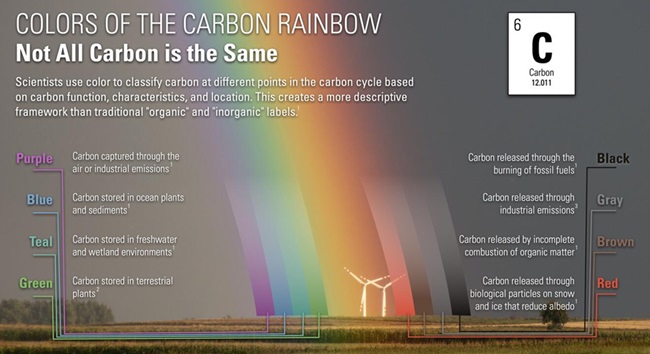|
Prelims
(General issues related to environmental ecology, biodiversity and climate change)
Mains
(General Studies Paper-3: Conservation, environmental pollution and degradation, environmental impact assessment)
|
Reference
India's first study on 'Teal Carbon' conducted in Keoladeo National Park highlights the importance of wetland conservation for climate adaptation and resilience.
What is Teal Carbon
- Teal carbon refers to carbon stored in non-tidal freshwater wetlands (e.g. marshes).
- These ecosystems are considered more efficient at carbon capture and storage than terrestrial forest ecosystems and can store and sequester more carbon than any other type of terrestrial ecosystem.
- This colour-based terminology reflects the classification of organic carbon based on its function and location rather than its physical properties.
Colour-based classification of carbon
- Scientists use colour to classify carbon based on its function, characteristics and location at different points in the carbon cycle. It is of the following types:
- Purple carbon: Carbon derived through air or industrial emissions
- Blue carbon: Carbon stored in marine plants and sediments
- Teal carbon: Carbon stored in freshwater and wetland environments
- Green carbon: Carbon stored in terrestrial plants and forests
- Black carbon: Carbon emitted from the burning of fossil fuels
- Grey carbon: Carbon emitted through industrial emissions
- Brown carbon: Carbon emitted from the incomplete combustion of organic matter
- Red carbon: Carbon released through biological particles on snow and ice




